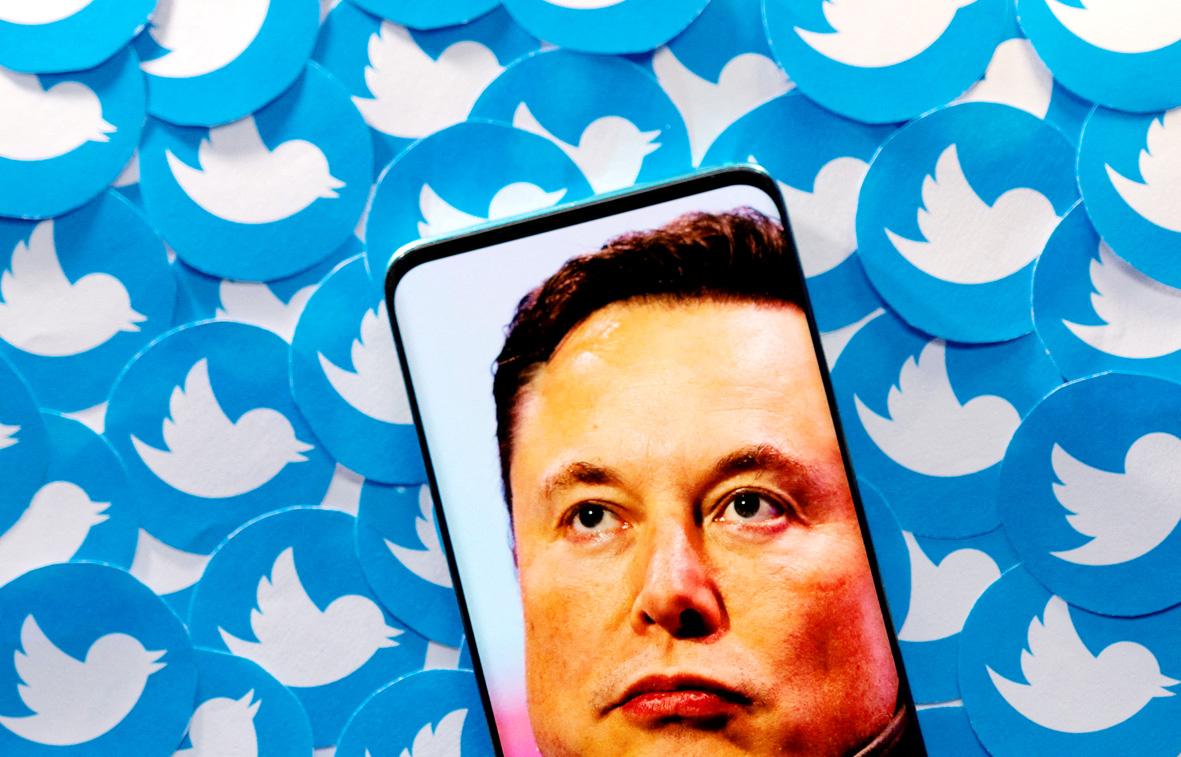Elon Musk’s demand that Tesla Inc staff stop “phoning it in” and get back to the office has thrust the world’s richest person into the noisy debate over the future of work, and shows again that some CEOs remain tone-deaf to employees’ growing demands for flexibility.
“Everyone at Tesla is required to spend a minimum of 40 hours in the office per week,” Musk wrote in a message addressed to employees at the electric-car maker. That “must be where your actual colleagues are located, not some remote pseudo office. If you don’t show up, we will assume you have resigned. The more senior you are, the more visible must be your presence.”
But that mandate might not be acceptable to some at Tesla, and will certainly spook staffers at Twitter Inc, which Musk is seeking to acquire, who have enjoyed a work-from-anywhere policy throughout the pandemic. In today’s tight labor market, with salaries soaring and workers quitting at a record clip, Musk’s policy could also cost him some talent.

Photo: REUTERS
“Companies that demand that their employees come back to the office are likely to face a set of problems,” said Brian Kropp, head of human-resources research at Gartner Inc, a technology-consulting company. “They will either have access to a smaller talent pool or will have to pay a compensation premium to force employees to come back.”
More than two out of three so-called knowledge workers — data scientists, engineers, graphic designers — prefer hybrid work, according to an ongoing survey of more than 10,000 white-collar workers from Future Forum. The research consortium is backed by Slack Technologies, a unit of Salesforce Inc that offers a popular workplace communications service.
EMPTY OFFICES
Just 19 percent of executives are working from the office five days a week, compared with 35 percent of nonexecs, Future Forum found. Those who are in the office full time report higher levels of stress and anxiety, and more than half would prefer to work flexibly at least part of the time.
Tesla’s chief executive officer isn’t having that. In his return-to-office memo, Musk said Tesla would have “long ago gone bankrupt” if he hadn’t “lived in the factory so much — so that those on the line could see me working alongside them.”
He also ridiculed companies with more flexible workplace policies, saying “when was the last time they shipped a great product It’s been a while.”
Carmakers, along with retailers and other firms with a mix of white-collar and frontline workers, walk a fine line when they extend flexibility to some employees and not to others.
The pandemic laid bare how dependent society is on the physical presence of blue-collar workers in hospitals, meatpacking plants and grocery stores. The idea of white-collar employees logging in safely at home, while lower-paid employees risked their health to show up in person, has been an added source of resentment in an already stratified US economy.
GOING IT ALONE
Musk’s office mandate contrasts with some auto-industry rivals. Ford Motor Co in April adopted a “flexible hybrid” model where some salaried staffers mainly come in for collaborative work and otherwise work from home. General Motors Co has a “work appropriately” strategy that lets white-collar workers log in remotely, rather than coming in every day. Mitsubishi Motors North America Inc offers its corporate employees the option to work from home all the time.
Musk’s dismissal of remote work, which he dismissed as “pretend,” illustrates a commonly held perception among bosses that remote workers aren’t as productive, innovative or collaborative as those in the office.
Goldman Sachs Group Inc CEO David Solomon last year called remote work an “aberration,” while Morgan Stanley CEO James Gorman expressed frustration that New Yorkers were visiting the city’s restaurants but avoiding their offices.
Research from Nicholas Bloom at Stanford University and other academics has shown that remote workers are just as productive, and typically more satisfied, than office workers.
TWITTER’S TAKE
Musk’s ultimatum also runs counter to current policy at Twitter, which is one of the most prominent tech companies to let most employees work from home permanently.
“If our employees are in a role and situation that enables them to work from home and they want to continue to do so forever, we will make that happen,” Twitter said last year.
Half of the world’s workers do so remotely or in a hybrid setup, up from 9 percent prior to the COVID-19 pandemic, according to a global study of employers by Willis Towers Watson, a risk-management and human-resources firm.
“The widespread adoption of these work arrangements during the pandemic has challenged some of myths that have accompanied remote work over the years, namely that people cannot be productive working remotely, which has fed into greater openness and acceptance,” said Brad Bell, director of the Center for Advanced Human Resource Studies at Cornell University. At Tesla, though, “clearly that is not true.”

It’s always a pleasure to see something one has long advocated slowly become reality. The late August visit of a delegation to the Philippines led by Deputy Minister of Agriculture Huang Chao-ching (黃昭欽), Chair of Chinese International Economic Cooperation Association Joseph Lyu (呂桔誠) and US-Taiwan Business Council vice president, Lotta Danielsson, was yet another example of how the two nations are drawing closer together. The security threat from the People’s Republic of China (PRC), along with their complementary economies, is finally fostering growth in ties. Interestingly, officials from both sides often refer to a shared Austronesian heritage when arguing for

The ultimate goal of the Chinese Communist Party (CCP) is the total and overwhelming domination of everything within the sphere of what it considers China and deems as theirs. All decision-making by the CCP must be understood through that lens. Any decision made is to entrench — or ideally expand that power. They are fiercely hostile to anything that weakens or compromises their control of “China.” By design, they will stop at nothing to ensure that there is no distinction between the CCP and the Chinese nation, people, culture, civilization, religion, economy, property, military or government — they are all subsidiary

Nov.10 to Nov.16 As he moved a large stone that had fallen from a truck near his field, 65-year-old Lin Yuan (林淵) felt a sudden urge. He fetched his tools and began to carve. The recently retired farmer had been feeling restless after a lifetime of hard labor in Yuchi Township (魚池), Nantou County. His first piece, Stone Fairy Maiden (石仙姑), completed in 1977, was reportedly a representation of his late wife. This version of how Lin began his late-life art career is recorded in Nantou County historian Teng Hsiang-yang’s (鄧相揚) 2009 biography of him. His expressive work eventually caught the attention

Late last month the Executive Yuan approved a proposal from the Ministry of Labor to allow the hospitality industry to recruit mid-level migrant workers. The industry, surveys said, was short 6,600 laborers. In reality, it is already heavily using illegal foreign workers — foreign wives of foreign residents who cannot work, runaways and illegally moonlighting factory workers. The proposal thus merely legalizes what already exists. The government could generate a similar legal labor supply simply by legalizing moonlighting and permitting spouses of legal residents to work legally on their current visa. But after 30 years of advocating for that reform,